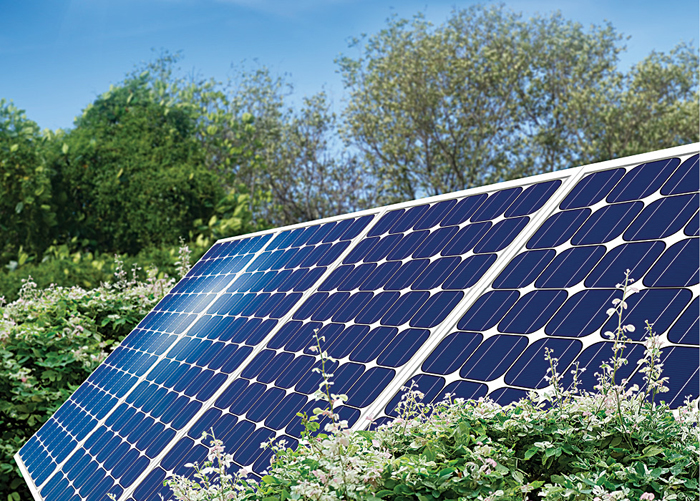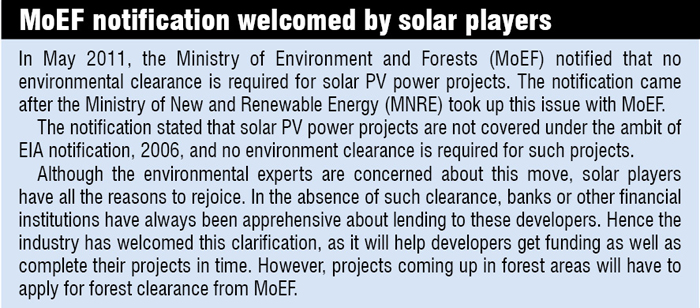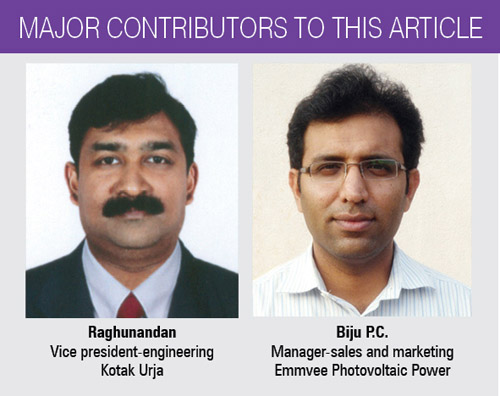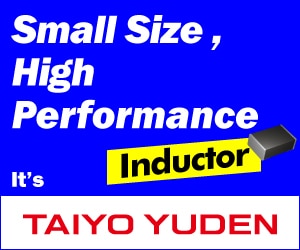Solar energy has long been touted better for the environment than fossil fuels. Considered as one of the ‘green’ sources of energy, it might become mainstream within the next decade. However, there are fears that solar cells production might release more hazardous gases than fossil fuels. Confirming these fears, Chinese authorities recently suspended production at a solar panel factory after protests by residents who blamed the plant for causing air and water pollution.
In India, on the other hand, the Ministry of Environment and Forests (MoEF), which issues environmental clearances to all projects across the country, has exempted solar photovoltaic (PV) power projects from the ambit of environmental clearances. The reasoning goes, “Isn’t it ‘cleaner’ to harness the power of the sun?” The obvious answer is ‘yes’, but only when the right manufacturing processes are followed.

Reasons for pollution
Manufacturing. Solar panel manufacturing generates a number of effluent gases contaminated with silane, trichlorosilane, dichlorosilane and hydrochloric acid (HCl), apart from chemicals like silicon, cadmium compounds, germane and polyvinyl fluoride—all of which are hazardous to the environment and people who are exposed to them. This manufacturing process also requires raw materials that have to be mined—quartz sand for silicon cells and metal ore for thin-film cells.
These materials are treated at different stages (in the case of silicon cells, these include purification, crystallisation and wafering). Finally, these upgraded materials are manufactured into solar cells and assembled into modules.
All these processes lead to air pollution caused by emission of heavy metals and are highly energy consuming, which brings about more air pollution with emission of heavy metals and release of greenhouse gases. Given the scale at which solar manufacturing is anticipated in India, there is going to be an enormous release of hazardous chemicals and gaseous substances into the environment.
Industry’s response. Industry experts and researchers have noted that solar cells produce far fewer air pollutants than conventional fossil-fuel-burning power plants. Making PV cells requires potentially toxic heavy metals such as lead, mercury and cadmium. It even produces greenhouse gases, such as carbon dioxide, which contribute to global warming. Still, researchers found that if people switched from conventional fossil-fuel-burning power plants to solar cells, air pollution would cut down by roughly 90 per cent.
According to Raghunandan, vice president-engineering, Kotak Urja, “Solar PV cells record emission statistics of 32 tonnes per gigawatt hour (GWh) of electricity generated, which is the lowest of all the conventional and non-conventional energy sources. With coal sources emitting a whopping 960 tonnes per GWh, solar PV cells stand as the lowest emitter of greenhouse gases among all. These emission figures of the solar industry are only due to the energy consumption during the manufacture of value-chain components.”
A research conducted by Brookhaven National Laboratory, New York, recommends cadmium telluride as one of the most promising PV technologies. But cadmium is one of the worst heavy metals. Still, researchers found that even when comparing direct emissions from the production of cadmium telluride cells with coal power plants, toxic emissions were 300 times lower.

Several studies have been conducted to compare greenhouse gas emissions of various power generation mechanisms, and all have found that renewable sources of power emit much lesser greenhouse gases than fossil fuels. Wind, nuclear and hydropower have always emitted the least amount of greenhouse gases over the lifecycle of electricity generation. PV, being the next, is still four to six times better than coal- and gas-based systems.
Disposal. The amount of toxic chemicals used to make solar panels is also a cause for concern. For solar power to be truly green, the industry must reduce and eventually eliminate the use of toxic materials and develop environmentally sustainable practices. Also, manufacturers must take responsibility for the lifecycle impacts of their products by testing new materials and processes, adopting more recycling technologies and designing products for easy recycling. PV modules, for example, contain substances such as glass, aluminium and semiconductor materials that can be successfully recovered for use either in new PV modules or other products.
Despite the volume of waste being small at present, the industry has to be cautious in opting for recycling processes in order to prevent environmental damage. PV Cycle, a European voluntary PV recycling initiative, estimates that there will be 35,000 tonnes of PV waste by 2020. However, thankfully, companies like First Solar and SolarWorld have already introduced recycling schemes for thin-film and silicon modules.
Industry’s response. Industry experts feel that for thin-film technologies, the biggest concern is safe disposal of hazardous materials. Manufacturers are opting for all the preventive measures to ensure safe disposal as most of them use fluorine-based recipes for chemical processes to mitigate greenhouse gas emission.
Impact on depleting water resources
There is also immense pressure on already depleting water resources due to vast installations of solar power plants. Water is needed in large volumes to wash solar panels as dust accumulation can affect the efficiency of solar panels, especially in dry areas like Gujarat and Rajasthan. These are states that have not only initiated solar power projects but also have huge installations lined up.
Industry’s response. Experts believe that there is an urgent need to attend to this problem since water is a scarce resource. There is a need to lay down normative water use and management standards for solar plants.
Solutions to curb PV-linked pollution

Though solar cells are far from being a zero-emission technology, this does not mean that PV solar energy should not be promoted. Environmental protection is a global concern, so manufacturers should pay attention to reducing or curbing the pollution levels by following international standards and protocols when a system’s total carbon footprint is calculated. A few solutions include:
Using the abatement system. As already pointed out, PV manufacturing processes produce hazardous solid byproducts and waste gases. These processes produce a mixture of toxic, reactive, ignitable and corrosive gases. In order to curb environmental pollution, hazardous gases need to be treated before being released into the atmosphere or water systems.
There are a number of solar cell technologies in use, some of which employ hazardous materials as basic constituents. The unutilised, non-consumed or unreacted gases (for example, in silicon-based technology, which uses gas) can be passed through an abatement system that works with the ‘dry’ or ‘wet’ method. This would help in neutralising the harmful effects of toxic gases.
Explaining the process, Biju P.C., manager, sales and marketing, Emmvee Photovoltaic Power, says, “In the dry process, the flammable gases are burnt with an external supply of gases like liquid petroleum gas (LPG) or methane to form a non-reactive ash. Here, the product is an oxide of silicon, which can be reused in the brick or glass industry. In the wet method, an external aid of other chemicals is required along with a mixture of water, which forms a non-reactive slurry of silicon oxide.
“Thus through these processes, other constituent gases also get converted into non-reactive/non-toxic gases with minimal quantity of nitrogen oxides. All these are released into the atmosphere following due industrial and pollution control authority norms. Similarly, during the manufacturing process of solar modules, all fumes emitted are passed through an abatement system and get neutralised in the process.”
Using solar panels to produce solar panels. A better strategy would be to use already available solar panels to produce more solar panels. Experts believe that the ecological burden of solar panels can be halved if 100 per cent of the energy required by the factories could be delivered by solar power.
Opting for green manufacturing processes. There are various solar companies that fall under the category of ‘zero emission’ and ‘green’ manufacturer, as permitted by the Pollution Board.
Raghunandan informs, “We have inhouse generation of solar power to back up the electricity requirements. We do not have any chemical process involved in our manufacturing. But packing is a major concern and we are working on it to reduce the emissions. For this, we have developed recyclable packing designs, which allow all our packing materials to be recycled 100 per cent. Thus, by improving the packing methods and complying to standards, one can drastically reduce the use of wood and paper.”
Opting for alternative cell technology. Crystalline cell technology has several alternatives, which are far better than conventional process technologies in terms of greenhouse gas emission. Laser-assisted processes and dry etching are prominent ones. Laser has become an indispensable tool for thin-film PV module production. With most thin-film materials, the layer scribing steps required for monolithic integration cannot be performed with the same flexibility and precision using any other process. This is why laser technology has been a key part of thin-film development for over two decades.
There are several laser-based processes currently used in solar cell manufacturing, or which have a high potential to be implemented in series production in the future. Among these are laser-edge isolation, laser-fired contacts, metal/emitter wrap-through and laser doping. These technologies come at a cost in terms of capital expenditure and also the watts per area produced. Many companies are using these technologies on a commercial scale for volume production.
As more companies begin to develop efficient solar energy collection technologies and higher purity manufacturing systems, the price of solar energy will become more competitive. However, solar energy’s economic and environmental benefits could be wiped out if thin-film manufacturers do not design, install and maintain pollution control systems to reduce harmful effluents from the gases released. In such a scenario, we will only be trading one set of problems for another.
Switch to solar energy inevitable
There are always two sides to a coin—while solar energy is considered the safest and most cost-effective renewable energy, its production process is energy-intensive. However, at the cell level the pollution is minimal and at the module level the pollution is negligible or near-zero. According to industry experts, overall, emission per tonne is the lowest among all the energy sources.
Opines Raghunandan, “If civilisation has to move into the twenty-second century, the twenty-first century has to be the century of clean power. Else, we will see devastation in the next 50 years. It is better to invest in solar power before we run out of fossil fuels.”
As per recent estimates, coal availability on a global average is expected to last only 60 years. The switch to solar energy is inevitable to save this planet and leave a cleaner world for future generations.
The author is an assistant editor at EFY. The article is reprint from January issue of EFY’s Electronics Bazaar magazine







